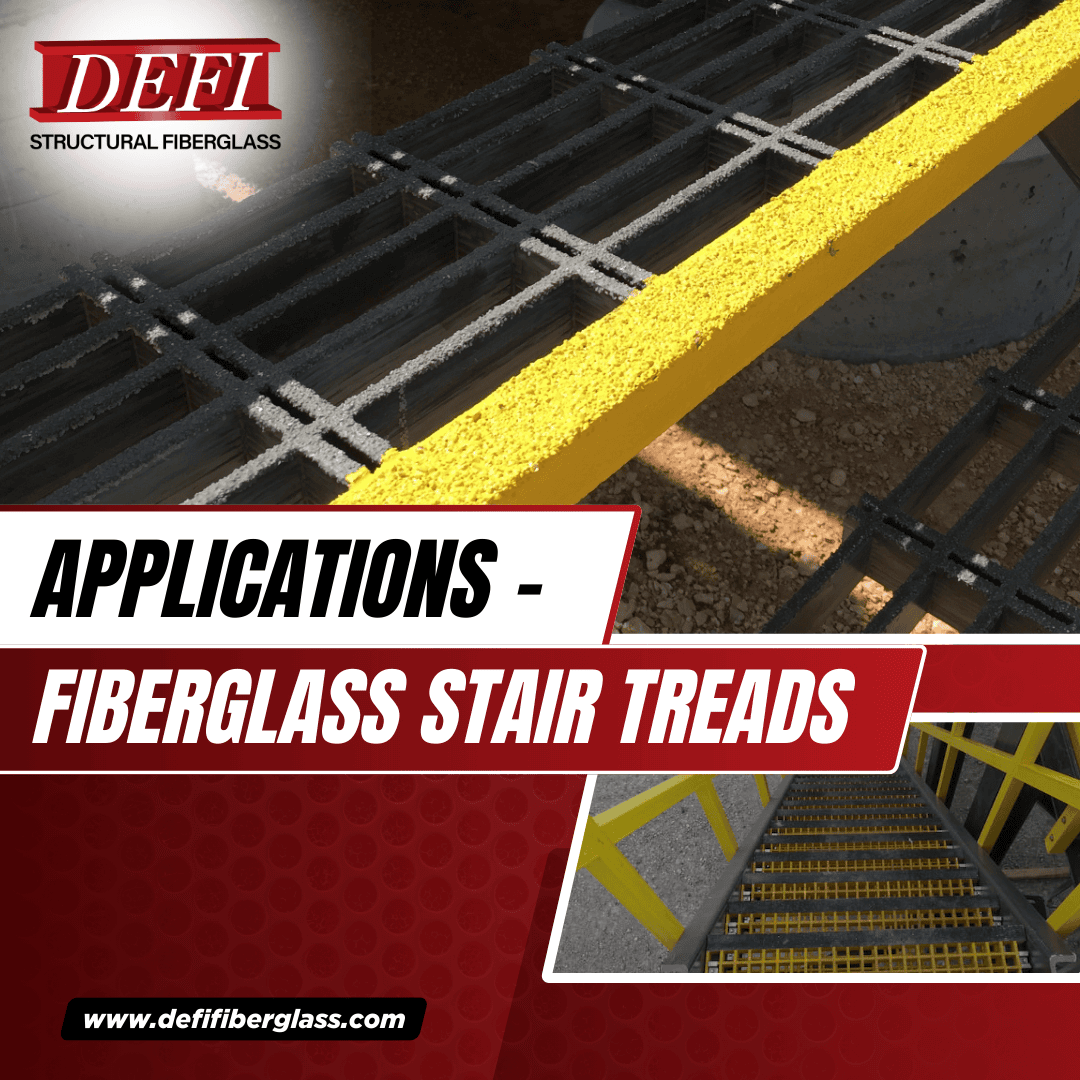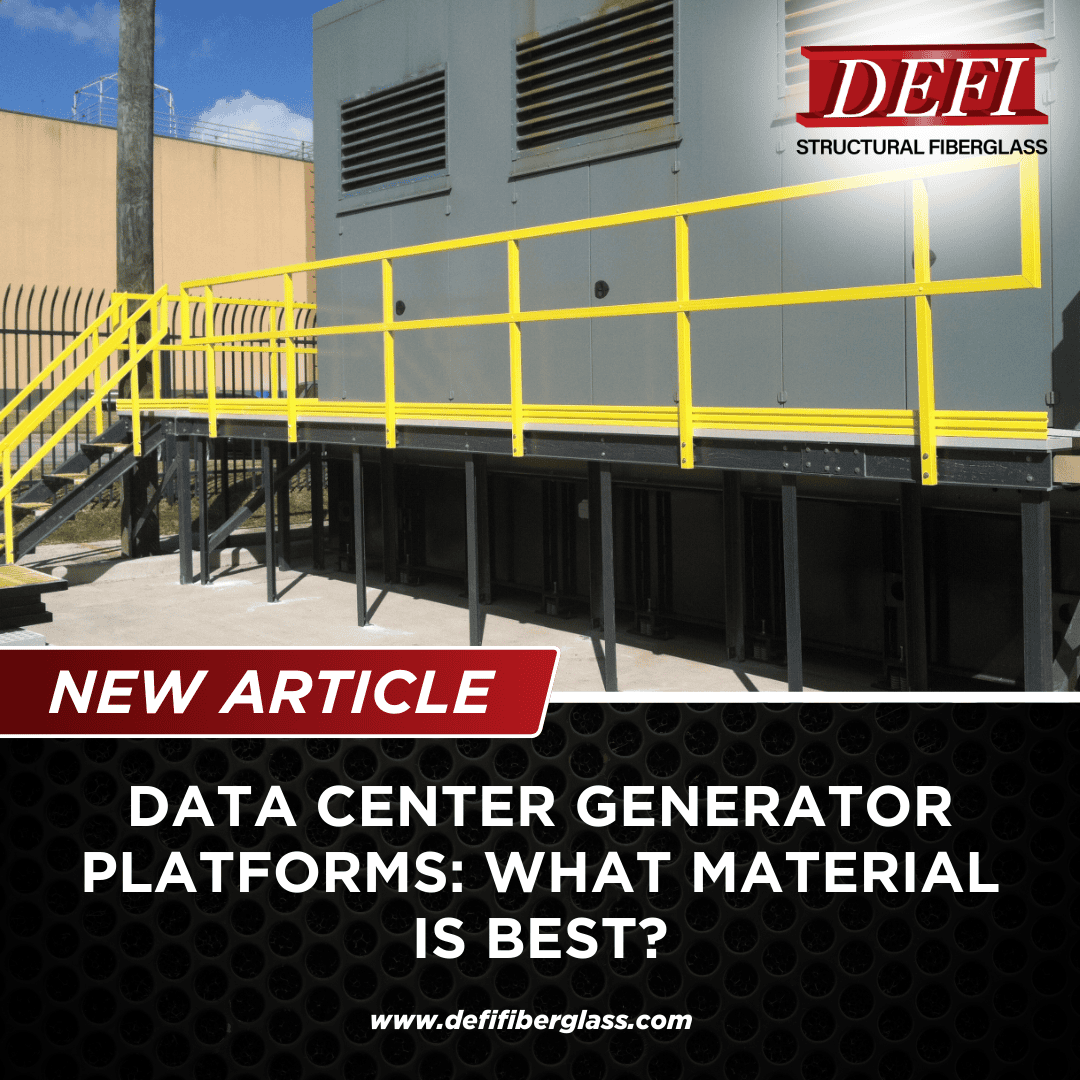For many, steel is the grating material of choice due to its low upfront costs. But does it really offer the best value? Is there another material that is better than steel? In most aspects, fiberglass grating is superior to steel. In fact, when compared head to head against steel, fiberglass that is manufactured into the same structures as steel is not only lighter but also resistant to corrosion while retaining the same strength at a fraction of the price. That is just scratching the surface when it comes to the advantages that fiberglass grating has over steel. Read on to find out more details on how fiberglass grating stacks up to steel.
THE TOP ADVANTAGES OF FIBERGLASS GRATING OVER STEEL
Strength
In terms of strength, fiberglass grating is comparable to steel. Pultruded fiberglass grating does offer improved strength but with added benefits steel can’t match. For example, even though fiberglass grating is rigid, it is a more flexible material than steel. This flexibility gives it a higher impact resistance compared to steel. Where an impact might damage or dent steel, an impact of similar strength on fiberglass grating will not cause any damage whatsoever. This is due to a special gel coat that gives fiberglass variable degrees of hardness depending on the application it is being manufactured for. This gel coat comes with the added benefit that adds features such as corrosion resistance, increased traction, and other ISO standard needs.
Safety
In the workplace, safety is of the utmost importance. Fiberglass is a safer material than steel in several key aspects. First, the material is non-skid, meaning it is designed to prevent sliding or skidding. Furthermore, it can be textured to increase traction. Steel, being a metal, is much more likely to cause slipping or skidding in damp conditions.
Fiberglass grating is also safer than steel in that it does not conduct electricity. The fact that steel readily conducts electricity can be a major hazard for workers. Since FRP is non-conductive it does not need to be grounded so this makes it suitable for many electrical hazard workplaces such as electrical plants and other areas with high-voltage concerns.
As already mentioned, the flexible property of fiberglass also gives it another advantage over steel; it is softer underfoot. The rigidness of steel can cause foot and back problems for workers, especially those that must stand for long periods of time. Fiberglass is easier on the feet and can decrease worker fatigue and increase productivity.
Fiberglass also has outstanding performance as an insulator that has little thermal conductivity. Where metal and steel conduct heat, which can be dangerous in the workplace, fiberglass remains cool regardless of the surroundings.
Safety can also be impacted by radio interference. Where many workplaces rely on radio communication to coordinate large operations, having radio interference can cause a serious accident. Unlike steel, fiberglass does not interfere with radio waves or any electrical signals for that matter. This means it can be used in environments where steel would normally interfere, causing potential safety hazards.
Durability
The biggest advantage that fiberglass has over steel is its durability. This is especially true in chemical or aquatic applications. Steel rusts, aluminum is reactive, wood rots and is susceptible to termites but FRP is corrosion resistant to the corrosive elements in water, corrosive chemicals, and insects. It should also be noted that steel requires additional costs for galvanizing or special coatings in order to be used in some environments which add to its overall cost and maintenance cost.
Whether it’s chemical exposure, salt water exposure, or extreme climate conditions— FRP products will outperform steel every single time. Since fiberglass is far more resistant to rust and corrosion when compared to steel, it will last longer and not need replacement as often as steel. Even in harsher conditions, fiberglass has proven to last for decades, where steel may need to realistically be replaced or at least repaired/repainted every 3-5 years or so depending on the corrosive levels. That maintenance cost adds up very quickly and can eat into your operational expenses.
Fiberglass molded structures can also have color pigments added to them during fabrication making the color part of the material instead of just being painted on and then having to be repainted often. This comes in very handy in plants that color code their walkways and structures as part of a safety regimen and identifier within a large facility.
Cost
As far as costs, steel is less expensive upfront. However, that is only considering the cost of material and not installation. Because of its heavy weight, the installation of steel grating is costly. A structural steel foreman, special equipment, operators and welders need to be calculated into the costs.
Fiberglass, being a lightweight material, is easier to work with. Therefore, installation requires less manpower and equipment. The installation costs of fiberglass grating can be less than half of steel. Not to mention, fiberglass is virtually maintenance free. On the other hand, steel may have to be repainted as part of regular maintenance, adding to its long-term cost. In the end, fiberglass is often a better investment.
Code Compliant
When it comes to materials and components used in building structures as well as public use infrastructure, they must meet stringent codes and remain in compliance for the life of the structure. Whether it’s fire code compliance, compliance to standards of structural integrity, compliance with ADA standards, or other building codes— fiberglass due to its makeup can be adapted for any standard of compliance at a fraction of the overall cost of steel. Take for example two of the most common building standards requirements— fire and ADA code compliance:
Fire Code Compliance
Buildings and infrastructure must be able to withstand a certain degree of extreme conditions such as heat, without catching fire. That requires materials that are heat resistant and are not easily flammable or are inherently inflammable. D.E.F.I. Phenolic FRP grating is a product designed to be the most reliable material for safety and durability for structures during a fire. Due to its non-flammable characteristics, it is able to hold up to direct exposure to fire for an extended duration without compromising major structural integrity. This remarkable durability is due to structural fiberglass fabrication with flame retardant phenolic resin.
D.E.F.I. Phenolic Gratings satisfy and exceed the L2 performance metric requirements to be used in open platform areas where evacuees are most likely to assemble during an incident, such as a fire or lifeboat launch areas in marine fire situations.
Benefits of Phenolic Fiberglass:
- Very Low Smoke Index
- Low Toxic Fume Emissions
- Up to 300°F Temperature Resistance
- High Corrosion Resistance
- Very Low Maintenance
ADA Code Compliance
 D.E.F.I. ADA compliant fiberglass grating offers the same durable benefits as our standard products as well as adding characteristics that aid in accessibility for persons with physical challenges. The mesh patterns of these gratings are designed in such a way to safely facilitate high pedestrian traffic including those with high heels or canes, crutches, and walkers. The small mesh of our ADA compliant grating also allows for the secondary benefit of comfort that is useful for foot traffic where pedestrians might be barefoot, such as water parks and public pools.
D.E.F.I. ADA compliant fiberglass grating offers the same durable benefits as our standard products as well as adding characteristics that aid in accessibility for persons with physical challenges. The mesh patterns of these gratings are designed in such a way to safely facilitate high pedestrian traffic including those with high heels or canes, crutches, and walkers. The small mesh of our ADA compliant grating also allows for the secondary benefit of comfort that is useful for foot traffic where pedestrians might be barefoot, such as water parks and public pools.
WHEN YOU NEED QUALITY FIBERGLASS PRODUCTS, YOU NEED D.E.F.I.
D.E.F.I. fiberglass products are not sourced from other manufacturers and then packaged for resell. Our products are ours from start to finish. We manufacture our fiberglass products according to your needs and specifications and each product undergoes a rigorous quality audit before shipping.
If you have a project that you’d like to implement fiberglass into, you’re making the right choice over steel. In the long run, fiberglass products will cut maintenance costs, last longer, and are far safer and more durable than steel for any environment. Contact one of our consultants today and see how D.E.F.I. fiberglass products can add value to your project.



